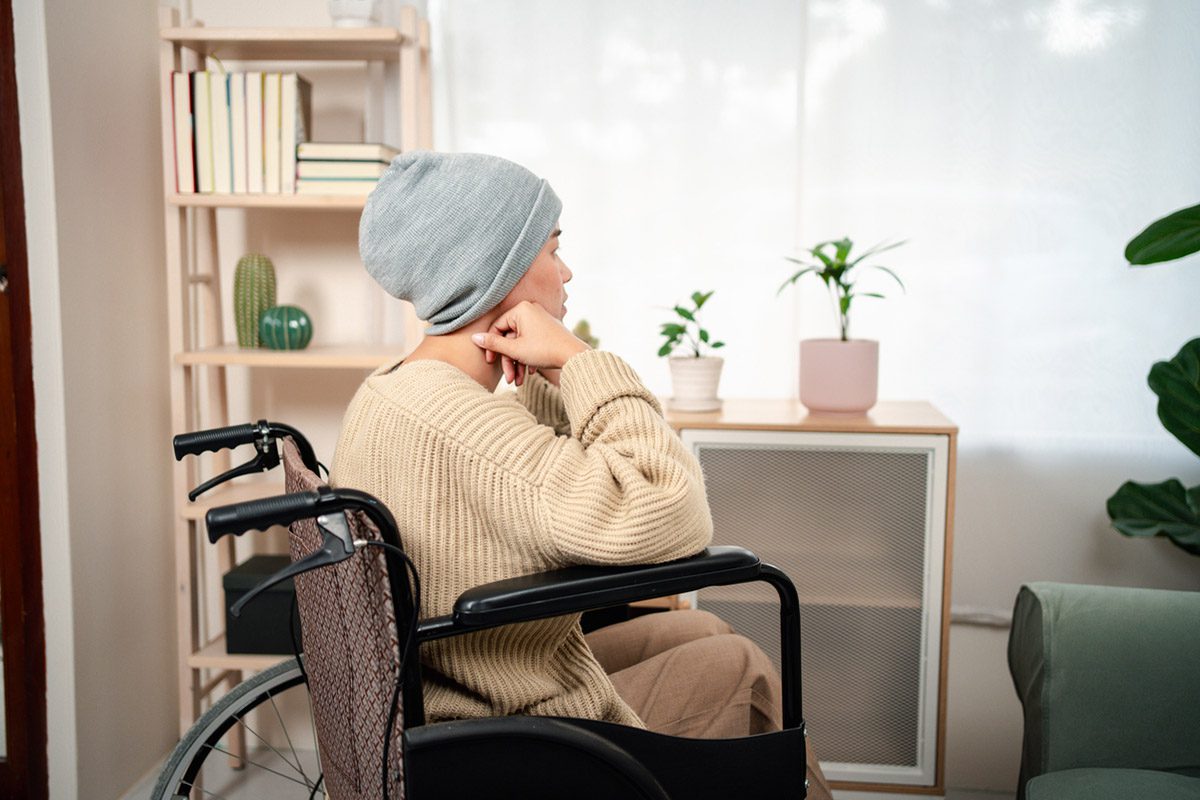Abstract
Objective: To determine the validity of telephone or video interviews, compared to face-to-face, for psychiatric diagnosis.
Data Sources: We searched MEDLINE, Embase, and PsycINFO from inception to June 22, 2023, and performed backward and forward citation analysis on all included studies on August 3, 2023.
Study Selection: We included primary studies comparing live telehealth (via telephone or videoconferencing) with face-to-face interviews using the same standardized diagnostic criteria for a mental health condition. Each patient had to undergo both modes of interviewing. Risk of bias was assessed using Quality Assessment of Diagnostic Accuracy Studies-2.
Results: This review included 35 studies. Seven are clinical studies that compare telehealth with face-to-face consultations for initial psychiatric diagnosis; telehealth via video or telephone is a reliable alternative for some specific disorders or for use in some specific populations that were studied. The other 28 studies compared telehealth to face-to-face interviews for the use of mental health standardized diagnostic instruments for a broad range of conditions, including depression, bipolar disorder, posttraumatic stress disorder, social anxiety disorder, and autism spectrum disorder, demonstrating good agreement and reliability. Telehealth holds promise for psychiatric assessments, especially when in-person evaluations are not feasible.
Conclusions: From the limited studies primarily conducted before the expansion of telehealth during the COVID-19 pandemic, several small studies suggest that telehealth’s psychiatric diagnoses or assessments of various psychiatric conditions seem to be a viable option and should be considered for certain patients during situations, settings, or environments. More research is needed, as telehealth has become more broadly utilized.
J Clin Psychiatry 2024;85(4):24r15296
Author affiliations are listed at the end of this article.
Members Only Content
This full article is available exclusively to Professional tier members. Subscribe now to unlock the HTML version and gain unlimited access to our entire library plus all PDFs. If you’re already a subscriber, please log in below to continue reading.
References (52)

- Scott AM, Bakhit M, Greenwood H, et al. Real-time telehealth versus face-to-face management for patients with PTSD in primary care: a systematic review and meta analysis. J Clin Psychiatry. 2022;83(4):21r14143. PubMed CrossRef
- Scott AM, Clark J, Greenwood H, et al. Telehealth v. face-to-face provision of care to patients with depression: a systematic review and meta-analysis. Psychol Med. 2022;52(14):2852–2860. PubMed CrossRef
- Krzyzaniak N, Greenwood H, Scott AM, et al. The effectiveness of telehealth versus face-to face interventions for anxiety disorders: a systematic review and meta-analysis. J Telemed Telecare. 2024;30(2): 250–261. PubMed CrossRef
- Scott AM, Peiris R, Atkins T, et al. Telehealth versus face-to-face delivery of cognitive behavioural therapy for insomnia: a systematic review and meta-analysis of randomised controlled trials. J Telemed Telecare. 2023:1357633X231204071. 10.1177/1357633X231204071 PubMed CrossRef
- Greenwood H, Krzyzaniak N, Peiris R, et al. Telehealth versus face-to-face psychotherapy for less common mental health conditions: systematic review and meta-analysis of randomized controlled trials. JMIR Ment Health. 2022;9(3): e31780. PubMed CrossRef
- Muskens EMH, Lucassen P, Groenleer W, et al. Psychiatric diagnosis by telephone: is it an opportunity? Soc Psychiatry Psychiatr Epidemiol. 2014;49(10): 1677–1689. PubMed CrossRef
- Page MJ, Moher D, Bossuyt PM, et al. PRISMA 2020 explanation and elaboration: updated guidance and exemplars for reporting systematic reviews. BMJ. 2021; 372:n160. PubMed CrossRef
- Whiting PF, Rutjes AWS, Westwood ME, et al. QUADAS-2_ a revised tool for the quality assessment of diagnostic accuracy studies. Ann Intern Med. 2011;155(8): 529–536. PubMed CrossRef
- Landis JR, Koch GG. The measurement of observer agreement for categorical data. Biometrics. 1977;33(1):159–174. PubMed CrossRef
- Cicchetti DV. Guidelines, criteria, and rules of thumb for evaluating normed and standardized assessment instruments in psychology. Psychol Assess. 1994;6(4):284–290. CrossRef
- Bistre M, Juven-Wetzler A, Argo D, et al. Comparable reliability and acceptability of telepsychiatry and face-to-face psychiatric assessments in the emergency room setting. Int J Psychiatry Clin Pract. 2022;26(3):228–233. PubMed CrossRef
- Seidel RW, Kilgus MD. Agreement between telepsychiatry assessment and face-to-face assessment for emergency department psychiatry patients. J Telemed Telecare. 2014;20(2):59–62. PubMed CrossRef
- Marcantonio ER, Michaels M, Resnick NM. Diagnosing delirium by telephone. J Gen Intern Med. 1998;13(9):621–623. PubMed CrossRef
- Singh SP, Arya D, Peters T. Accuracy of telepsychiatric assessment of new routine outpatient referrals. BMC Psychiatry. 2007;7:55. PubMed CrossRef
- Burke WJ, Roccaforte WH, Wengel SP, et al. The reliability and validity of the Geriatric Depression Rating Scale administered by telephone. J Am Geriatr Soc. 1995;43(6):674–679. PubMed CrossRef
- Paing WW, Weller RA, Dixon TA, et al. Face-to-face versus telephone administration of the parent’s version of the children’s interview for psychiatric syndromes (P-ChIPS). Curr Psychiatry Rep. 2010;12(2):122–126. PubMed CrossRef
- Shore JH, Savin D, Orton H, et al. Diagnostic reliability of telepsychiatry in American Indian veterans. Am J Psychiatry. 2007;164(1):115–118. PubMed CrossRef
- Kobak KA. A comparison of face-to-face and videoconference administration of the Hamilton Depression Rating Scale. J Telemed Telecare. 2004;10(4):231–235. PubMed CrossRef
- Kobak KA, Williams JBW, Jeglic E, et al. Face-to-face versus remote administration of the Montgomery-Asberg Depression Rating Scale using videoconference and telephone. Depress Anxiety. 2008;25(11):913–919. PubMed CrossRef
- Hermens MLM, Ader HJ, van Hout HPJ, et al. Administering the MADRS by telephone or face-to-face: a validity study. Ann Gen Psychiatry. 2006;5:3. PubMed CrossRef
- Tunstall N, Prince M, Mann A. Concurrent validity of a telephone-administered version of the Gospel Oak instrument (including the SHORT-CARE). Int J Geriatr Psychiatry. 1997;12(10):1035–1038. PubMed CrossRef
- Burke WJ, Rangwani S, Roccaforte WH, et al. The reliability and validity of the collateral source version of the Geriatric Depression Rating Scale administered by telephone. Int J Geriatr Psychiatry. 1997;12(3):288–294. PubMed CrossRef
- Simon GE, Revicki D, VonKorff M. Telephone assessment of depression severity. J Psychiatr Res. 1993;27(3):247–252. PubMed CrossRef
- Wells KB, Burnam MA, Leake B, et al. Agreement between face-to-face and telephone-administered versions of the depression section of the NIMH diagnostic interview schedule. J Psychiatr Res. 1988;22(3):207–220. PubMed CrossRef
- Brar LK, Brar JS, Deily NG, et al. Can clinical features of bipolar-I disorder be assessed reliably on the telephone? J Affect Disord. 2002;71(1–3):221–227. PubMed CrossRef
- Feldman-Naim S, Myers FS, Clark CH, et al. Agreement between face-to-face and telephone-administered mood ratings in patients with rapid cycling bipolar disorder. Psychiatry Res. 1997;71(2):129–132. PubMed CrossRef
- Revicki DA, Tohen M, Gyulai L, et al. Telephone versus in-person clinical and health status assessment interviews in patients with bipolar disorder. Harv Rev Psychiatry. 1997;5(2):75–81. PubMed CrossRef
- Aziz MA, Kenford S. Comparability of telephone and face-to-face interviews in assessing patients with posttraumatic stress disorder. J Psychiatr Pract. 2004;10(5):307–313. PubMed CrossRef
- Porcari CE, Amdur RL, Koch EI, et al. Assessment of post-traumatic stress disorder in veterans by videoconferencing and by face-to-face methods. J Telemed Telecare. 2009;15(2):89–94. PubMed CrossRef
- Litwack SD, Jackson CE, Chen M, et al. Validation of the use of video teleconferencing technology in the assessment of PTSD. Psychol Serv. 2014;11(3):290–294. PubMed CrossRef
- Michel C, Schimmelmann BG, Kupferschmid S, et al. Reliability of telephone assessments of at-risk criteria of psychosis: a comparison to face-to-face interviews. Schizophr Res. 2014;153(1–3):251–253. PubMed CrossRef
- Hajebi A, Motevalian A, Amin-Esmaeili M, et al. Telephone versus face-to-face administration of the Structured Clinical Interview for Diagnostic and Statistical Manual of Mental Disorders, Fourth Edition, for diagnosis of psychotic disorders. Comprehensive Psychiatry. 2012;53(5):579–583. PubMed CrossRef
- Yoshino A, Shigemura J, Kobayashi Y, et al. Telepsychiatry: assessment of televideo psychiatric interview reliability with present- and next-generation internet infrastructures. Acta Psychiatr Scand. 2001;104(3):223–226. PubMed CrossRef
- Crippa JAS, de Lima Osório F, Del-Ben CM, et al. Comparability between telephone and face-to-face structured clinical interview for DSM-IV in assessing social anxiety disorder. Perspect Psychiatr Care. 2008;44(4):241–247. PubMed CrossRef
- Reese RM, Jamison R, Wendland M, et al. Evaluating interactive videoconferencing for assessing symptoms of autism. Telemed J E Health. 2013; 19(9):671–677. PubMed CrossRef
- Baer L, Cukor P, Jenike MA, et al. Pilot studies of telemedicine for patients with obsessive-compulsive disorder. Am J Psychiatry. 1995;152(9):1383–1385. PubMed CrossRef
- Grob P, Weintraub D, Sayles D, et al. Psychiatric assessment of a nursing home population using audiovisual telecommunication. J Geriatr Psychiatry Neurol. 2001;14(2):63–65. PubMed CrossRef
- Jones BN 3rd, Johnston D, Reboussin B, et al. Reliability of telepsychiatry assessments: subjective versus observational ratings. J Geriatr Psychiatry Neurol. 2001;14(2):66–71. PubMed CrossRef
- Cacciola JS, Alterman AI, Rutherford MJ, et al. Comparability of telephone and In-person structured clinical interview for DSM-III-R (SCID) diagnoses. Assessment. 1999;6(3):235–242. PubMed CrossRef
- Ruskin PE, Reed S, Kumar R, et al. Reliability and acceptability of psychiatric diagnosis via telecommunication and audiovisual technology. Psychiatr Serv. 1998;49(8):1086–1088. PubMed CrossRef
- Hajebi A, Motevalian A, Amin-Esmaeili M, et al. Telephone versus face-to-face administration of the structured clinical interview for diagnostic and statistical manual of mental disorders, fourth edition, for diagnosis of psychotic disorders. Compr Psychiatry. 2012;53(5):579–583. PubMed CrossRef
- Evans M, Kessler D, Lewis G, et al. Assessing mental health in primary care research using standardized scales: can it be carried out over the telephone? Psychol Med. 2004;34(1):157–162. PubMed CrossRef
- Watson CG, Anderson PE, Thomas D, et al. Comparability of telephone and face to face diagnostic interview schedules. J Nerv Ment Dis. 1992;180(8):534–535. PubMed CrossRef
- Rohde P, Lewinsohn PM, Seeley JR. Comparability of telephone and face-to-face interviews in assessing axis I and II disorders. Am J Psychiatry. 1997;154(11): 1593–1598. PubMed CrossRef
- Lyneham HJ, Rapee RM. Agreement between telephone and in-person delivery of a structured interview for anxiety disorders in children. J Am Acad Child Adolesc Psychiatry. 2005;44(3):274–282. PubMed CrossRef
- Stavropoulos KKM, Bolourian Y, Blacher J. A scoping review of telehealth diagnosis of autism spectrum disorder. PLoS One. 2022;17(2):e0263062. PubMed CrossRef
- McCleery J, Laverty J, Quinn TJ. Diagnostic test accuracy of telehealth assessment for dementia and mild cognitive impairment. Cochrane Database Syst Rev. 2021;7(7):CD013786. PubMed CrossRef
- La Valle C, Johnston E, Tager-Flusberg H. A systematic review of the use of telehealth to facilitate a diagnosis for children with developmental concerns. Res Dev Disabil. 2022;127:104269. PubMed CrossRef
- Shah SR, Munhall CC, Nguyen SA, et al. Diagnostic accuracy and management concordance of otorhinolaryngological diseases through telehealth or remote visits: a systematic review & meta-analysis. J Telemed Telecare. 2023:1357633x231156207. 10.1177/1357633X231156207 PubMed CrossRef
- Ng HJH, Huang D, Rajaratnam V. Diagnosing surgical site infections using telemedicine: a systematic review. Surgeon. 2022;20(4):e78–e85. PubMed CrossRef
- Tan IJ, Dobson LP, Bartnik S, et al. Real-time teleophthalmology versus face-to-face consultation: a systematic review. J Telemed Telecare. 2017;23(7):629–638. PubMed CrossRef
- Inês Meurer M, Caffery LJ, Bradford NK, et al. Accuracy of dental images for the diagnosis of dental caries and enamel defects in children and adolescents: a systematic review. J Telemed Telecare. 2015;21(8):449–458. PubMed




